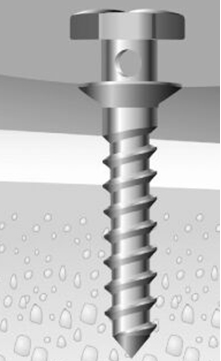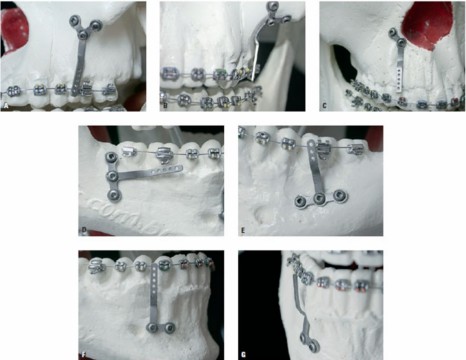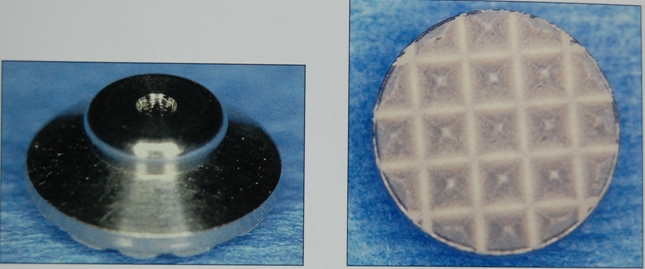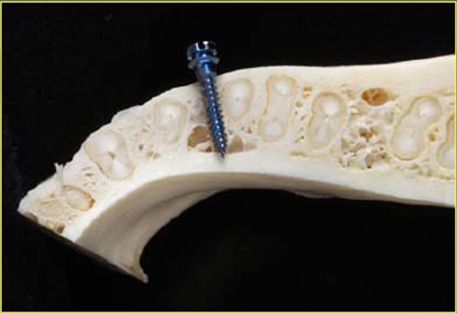Microimplant screws for Anchorage in Orthodontics:Dawn of a New Era-Part III
Types of Devices MINISCREWS: Of all orthodontic implants, miniscrews have gained considerable importance due to less surgical procedure and easy installation. Titanium miniscrews may be an ideal anchorage system that fulfills the clinical needs of the orthodontist. Some of their benefits include dependability, are well accepted by patients, can be immediately loaded, and are simple to insert and remove, and conform to the anchorage needs of the orthodontist/ The miniscrew can be loaded immediately with forces in the range of 50 to 300. This anchorage system can be used to support a variety of orthodontic tooth movements in clinical situations involving mutilated dentitions, poor cooperation, or extraction cases requiring maximum anchorage. Common sizes of mini implants often used are 1.2 – 2 mm in diameter and 6-10 mm in length in various combinations. MINIPLATES:
MINIPLATES: The Miniplate Implants are comprised of bone plates and fixation screws. The plates and screws are made of commercially pure titanium that is biocompatible and suitable for osseointegration.
The miniplate consists of the three components—the head, the arm, and the body The head component is exposed intraorally and positioned outside of the dentition so that it does not interfere with tooth movement. The head component has three continuous hooks for attachment of orthodontic forces. There are two different types of head components based on the direction of the hooks.
The arm component is transmucosal and is available in three different lengths—short (10.5 mm), medium (13.5 mm), and long (16.5 mm) to accommodate individual morphological differences. The body component can be positioned subperiosteally and is available in three different configurations—the T -plate, the Y-plate, and the ¬L- plate.
Main advantage of miniplates is that they do not interfere with tooth movement as they can be placed away from tooth. Multiple screws used to fix the miniplate provide a robust anchorage unit. Useful where you need consistent and reliable delivery for prolonged periods.
 Palaltal Implants-Onplants
Palaltal Implants-OnplantsThe use of onplants for orthodontic or orthopedic anchorage is a relatively new area of research, and investigations on this subject are limited. In 1995, Block and Hoffman1 reported on the successful use of an onplant, a subperiosteal disk, as orthodontic anchor- age in an experimental study with dogs and monkeys. It was a relatively ?at, disk-shaped ?xture of 7.7 mm (Nobel Biocare, Gotenberg, Sweden) with a textured, hydroxyapatite-coated surface for integration with bone. Unlike implants, onplants require only simple surgical procedures to place and to remove; this makes them more versatile than implants as anchorage units in orthodontics. Onplants are osseointegrated on relatively inactive bony surfaces. They can be placed in patients with various stages of dental eruption. Onplants are surgically placed on the ?at part of the palatal bone near the maxillary molar region. An incision is made in the palatal mucosa from the premolar area toward the midline. The tissue is tunneled under, in full-thickness fashion, past the midline to the eventual implantation site. The onplant is then slipped under the soft tissue and brought into position, and the incison is sutured. A vacuum-formed stent is worn by the patient for 10 days for the initial stabilization.TPA is attached to onplant after healing. Surgical procedure is quite invasive with Onplant.
 Bicortical Screws
Bicortical ScrewsThe placement of microimplant may be bicortical or unicortical. A unicortical placement means the miniscrew is dependent on only one cortical plate, as opposed to an anchor that is longer and contacts both cortical plates, such as in the area of the lower anteriors. An anchor of sufficient length can pass through the facial cortical plate and contact the lingual cortical plate—this is, a bicortical situation. Bicortical screws give you better stability and anchorage value.
 Transalveolar Bicortical Screws
Transalveolar Bicortical ScrewsNew trans-alveolar screw (TAS) as a temporary orthodontic anchorage device for the posterior maxilla to intrude an overerupted maxillary molar. The main advantage of TAS is that when placed in the maxilla to intrude upper molars, they allow application of intrusive force from both buccal and palatal aspects simultaneously, so the line of force in relation to the center of resistance of the posterior segment, allows an in-mass intrusion, avoiding buccal tipping or rotations. Moreover the surgical procedure for inserting and re- moving the bicortical screw is simple, does not require any surgical flap, so complications are minimal and screws can be loaded immediately, without requir- ing any waiting healing period of time.
To place the TAS, local anesthetic is infltrated both in the vestibular and palatal sides. A 1.8-mm bur drills transmucosally at the mucogingi- val junction. It crosses the alveolar process and exits through the palatal mucosa
 Methods of placement
Methods of placement - Pre-tapping method: In this method the miniscrews is driven into the tunnel of bone formed by drilling, making it tap during implant driving). This method is used when we use small diameter miniscrews
- Self tapping: Here a slight notch is made and then the screw is tapped in bone.
- Self-Drilling method: Here the miniscrews is driven directly into bone without drilling.
Next section: Site/Screw selection/placement tech, Links and Downloads Tweet